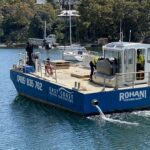Marine piling provides the foundation for wharves, jetties and coastal defenses. Work begins well before any steel meets water, with thorough surveys, design development and permit applications. Pile material, length and diameter must suit seabed composition and load demands. Detailed preparation prevents costly delays once equipment and crews arrive onsite. This guide steps through each phase, from initial investigation to testing and finishing.
Site Investigation and Design Development
Geotechnical surveys reveal soil layers and underwater obstructions. Bathymetric data confirms water depths and tidal ranges at each berth. Surveyors record seabed samples that inform pile type and drive method. Engineers translate these findings into design plans, specifying pile dimensions, load ratings and corrosion allowances. Early collaboration between project leads and specialists ensures plans align with local regulations and environmental restrictions.
Selecting Equipment and Techniques
Piling rigs vary from simple hammer systems mounted on barges to vibratory drivers and hydraulic hammers for hard substrates. Crane-mounted hammers offer precise positioning in tight spaces. Materials include steel H-pilings, tubular piles or composite options with added corrosion protection. Operators offering comprehensive marine services can advise on drive energy, hammer weight and template design. Matching equipment to site conditions streamlines installation and reduces rework.
Pile Driving and Installation
Mobilisation begins with barge placement or shore-based rig positioning. Template guides maintain alignment as the hammer engages. Vibratory drivers displace soft sediments, while hammer impacts penetrate dense layers. Teams monitor blow counts per metre to assess resistance and inform drive termination. As piles reach design depth or refusal criteria, cut-off levels are marked for final trimming. Temporary casings may support deep drives in loose soils, then removed or left as permanent sleeves.
Quality Control and Testing Procedures
Certified marine piling contractors carry out dynamic load testing to verify capacity, using sensors that record ram energy and pile resistance. Static load tests offer additional assurance for heavy-duty structures, applying controlled loads and measuring settlement. Inspectors check verticality and alignment, making adjustments where necessary. Detailed reports document pile integrity and compliance with project specifications.
Environmental and Safety Measures
Work planning addresses noise limits, turbidity controls and marine fauna protection. Silt curtains contain sediment plumes and spill kits stand ready for accidental releases. Site induction covers vessel movements, exclusion zones and emergency procedures. Regular equipment checks minimise oil leaks and gear failures. Liaison with harbour authorities secures necessary work windows and ensures traffic management around active piling zones.
Final Touches and Handover
Once piles are secure, tops are trimmed to design elevations and capped with load-bearing beams or concrete heads. Cofferdams or support frames may follow for deck or seawall construction. A final inspection confirms that alignment, depth and structural criteria have been met. Handover packages include as-built drawings, test records and maintenance recommendations. Well-executed piling projects form the solid base for lasting marine infrastructure.
The author is a marine construction and logistics specialist with deep experience in waterfront infrastructure, vessel operations, and piling projects. Their insights help clients navigate complex maritime builds and barge hire across Australia. For expert support on your next marine venture, visit: http://eastcoastmarinecontracting.com.au/

